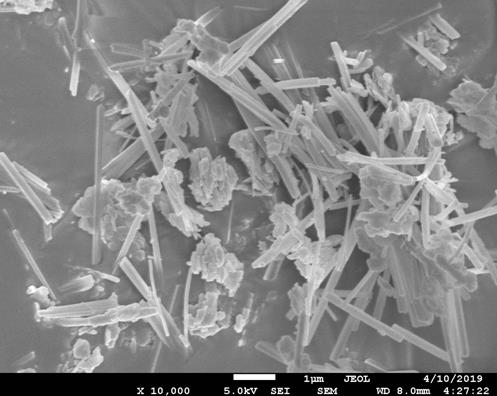Preparation method of hydrogenation and residual carbon removal catalyst
A technology for removing carbon residues and catalysts, which is applied in the field of preparation of hydrogenation carbon residue removal catalysts. It can solve the problems of unfavorable diffusion of macromolecular reactants, increased surface acid content, and high pore content, and achieves suitable acid strength distribution and pore structure. Moderate, high acid effect
- Summary
- Abstract
- Description
- Claims
- Application Information
AI Technical Summary
Problems solved by technology
Method used
Image
Examples
preparation example Construction
[0028] Preparation of Material B:
[0029] (1) Preparation of material B1
[0030] 200 grams of kaolin was placed in a high-temperature muffle furnace and activated at 850° C. for 5 hours. Weigh 100 grams of the above-mentioned activated kaolin, 400 grams of ammonium bicarbonate, add 1500 grams of distilled water to the above materials and stir for 20 minutes, transfer the mixed materials into an autoclave and seal it and heat it up to 80 degrees Celsius at a speed of 10 degrees Celsius / min The temperature was kept constant for 3 hours, then the temperature was raised to 135°C at a rate of 5°C / min for 5 hours, and then the material was dried at 110°C for 6 hours and calcined at 750°C for 5 hours.
[0031] Weigh 50 grams of the above-mentioned materials, place them in a beaker, add 1500 grams of hydrochloric acid solution with a mass percentage concentration of 25% into the beaker, place the beaker in an ultrasonic container for ultrasonic treatment, the ultrasonic frequency i...
Embodiment 1
[0037] (1) Mix 5 grams of starch and 200 grams of pseudo-boehmite evenly to prepare mixed material A.
[0038] (2) Put 100g of mixed material A in the turntable molding machine and mix thoroughly, adjust the inclination angle of the turntable to 40º, and the rotation speed of the turntable to 10rpm; spray the acetic acid aqueous solution with a mass concentration of 2% on the mixed material A in the turntable through the sprayer After mixing and contacting, the molding time of the material in the turntable is 30 minutes, and the precursor I with a diameter of 1.0-1.5 mm is obtained;
[0039] (3) Put 100g of material B1 and the precursor I prepared in step (2) into the turntable molding machine and mix thoroughly, adjust the inclination angle of the turntable to 40º, and the rotation speed of the turntable to 10rpm, spray the acetic acid aqueous solution with a mass concentration of 2% After being sprayed on the materials in the turntable and mixed and contacted, the molding ti...
Embodiment 2
[0042] The same as in Example 1, except that the amount of starch added in the mixed material A is 8 grams, and the material B1 is replaced with material B3 to obtain the hydrogenation carbon removal catalyst Cat-2, and the properties of the catalyst are shown in Table 1.
PUM
| Property | Measurement | Unit |
|---|---|---|
| Diameter | aaaaa | aaaaa |
| Specific surface area | aaaaa | aaaaa |
| Pore volume | aaaaa | aaaaa |
Abstract
Description
Claims
Application Information
 Login to View More
Login to View More - R&D
- Intellectual Property
- Life Sciences
- Materials
- Tech Scout
- Unparalleled Data Quality
- Higher Quality Content
- 60% Fewer Hallucinations
Browse by: Latest US Patents, China's latest patents, Technical Efficacy Thesaurus, Application Domain, Technology Topic, Popular Technical Reports.
© 2025 PatSnap. All rights reserved.Legal|Privacy policy|Modern Slavery Act Transparency Statement|Sitemap|About US| Contact US: help@patsnap.com



